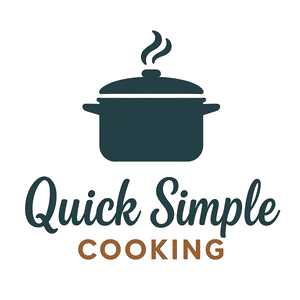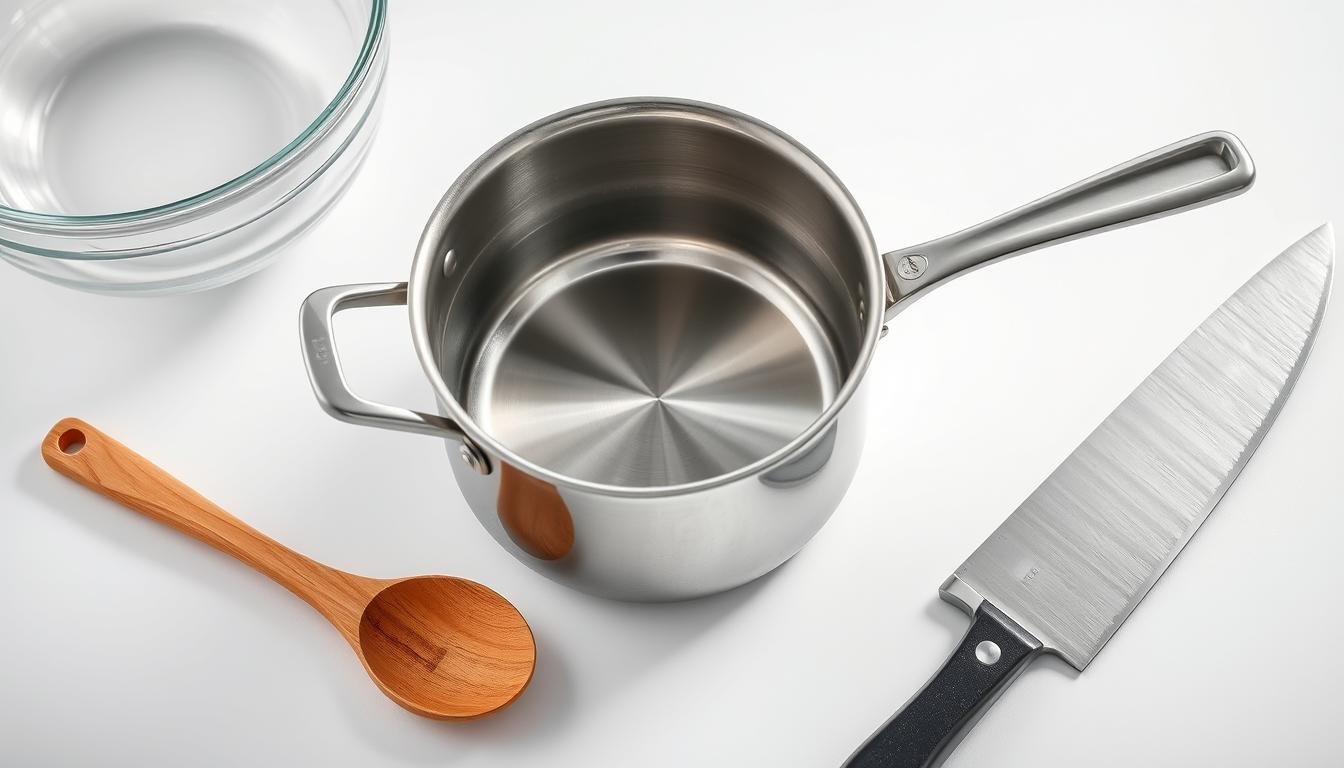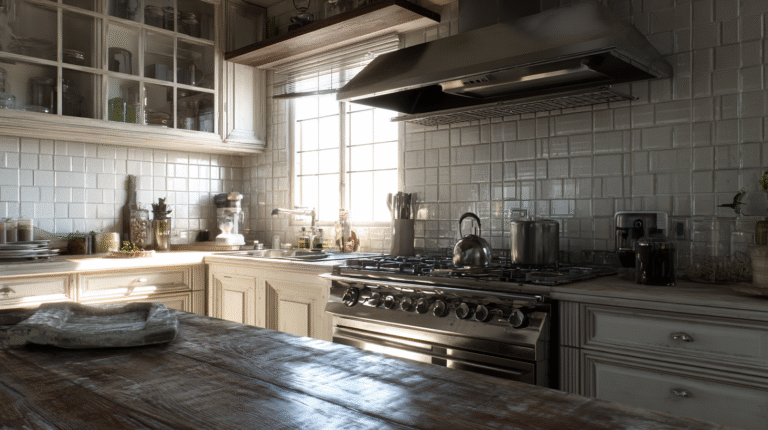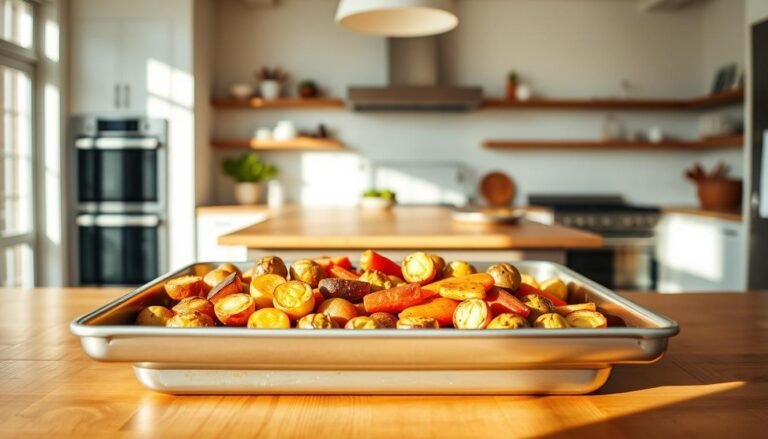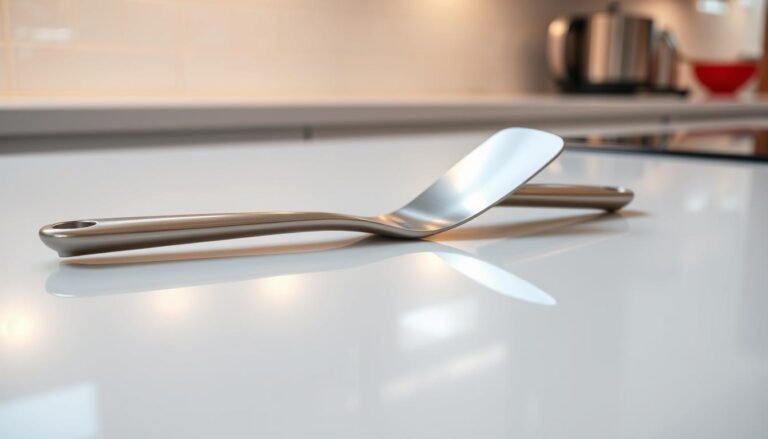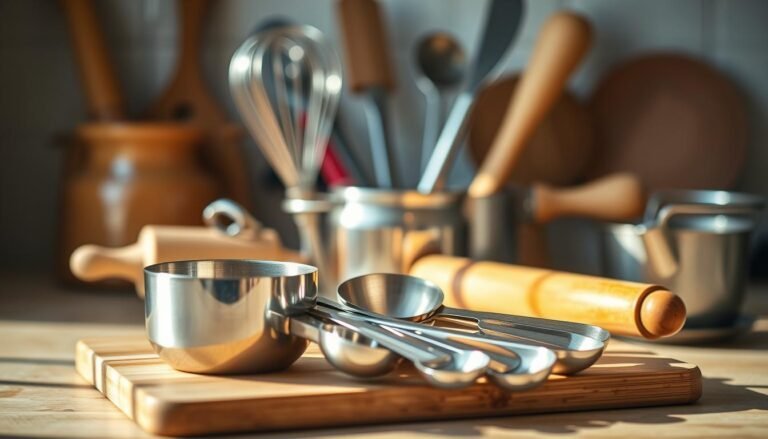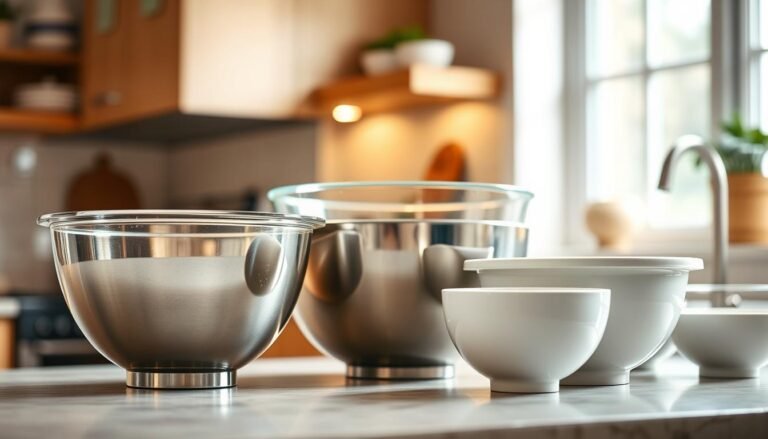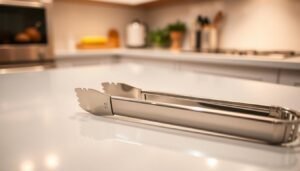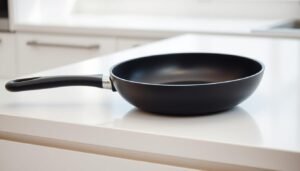Disclosure: This Post Contains Affiliate Links; We earn a commission on purchases.
A saucepan is key in any kitchen. It’s great for many cooking tasks. You can use it to simmer sauces or boil pasta.
A saucepan spreads heat well. This makes it perfect for cooking that needs careful control. It’s a must-have for both new and experienced cooks.
Key Takeaways
- Saucepans are versatile kitchen tools used for various cooking tasks.
- They are ideal for cooking methods that require precision and control.
- A good saucepan distributes heat evenly, making it essential for many recipes.
- Having a reliable saucepan is a must for both novice and experienced cooks.
- Saucepans are a fundamental component of any kitchen.
The Fundamental Role of Saucepans in Modern Cooking
Saucepans are key in modern cooking, serving many purposes. A stainless steel saucepan is a top choice for many. It’s a must-have in many kitchens.
Defining Characteristics of a Classic Saucepan
A classic saucepan has a round shape and straight sides. It also has a single long handle. These features make it great for stirring and pouring.
Its material, like stainless steel, makes it strong and good at spreading heat.
How Saucepans Have Evolved Through Culinary History
Saucepans have changed a lot over time. They’ve moved from copper and cast iron to nonstick and induction-friendly designs. This change shows how cooking has evolved.
Now, you can find cooking pots or saucepans in many materials. Each has its own benefits for different cooking tasks.
Types of Saucepans: Materials That Define Performance
Saucepan materials are key to their heat spread, lasting power, and cooking skill. The right material makes a big difference in cooking. This is why some saucepans are better for certain tasks than others.
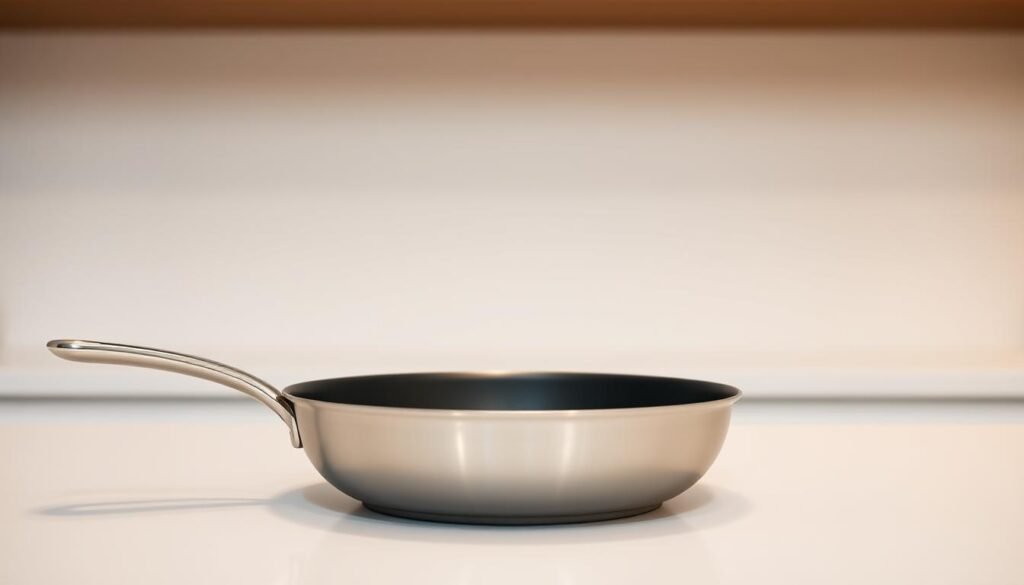
Stainless Steel Saucepans: The Professional’s Choice
Stainless steel saucepans are tough and don’t rust. They’re loved by pro chefs for their heat handling and even heat spread. A stainless steel saucepan with lid is great for cooking that needs exact temperature control.
Nonstick Saucepans: Convenience for Everyday Cooking
Nonstick saucepans have a special coating that stops food from sticking. This makes them easy to clean and perfect for cooking things like eggs and crepes. They’re great for daily cooking and are often chosen by home cooks for their ease.
Copper and Cast Iron Options: Traditional Excellence
Copper saucepans heat up fast and control temperature well. But, they cost more and need care. Cast iron saucepans keep heat well and are good for both stovetop and oven use. They’re a classic choice, loved for their lasting quality and cooking ability.
Aluminum and Tri-Ply Constructions: Balancing Heat Distribution
Aluminum saucepans are light and heat up well, but can react with acidic foods. Tri-ply saucepans have an aluminum core between stainless steel layers. They mix good heat spread with lasting power. These saucepans cook well and resist rust.
Essential Features of a Quality Saucepan
The right saucepan can make all the difference in cooking. It’s not just about the material. It’s also about design, functionality, and performance under different cooking conditions.
Handle Design: Comfort, Heat Resistance, and Durability
A good handle is key for comfort and safety. It should be heat-resistant to avoid burns. It also needs to be durable for high temperatures and frequent use. Ergonomic handles can help reduce hand strain.
Lid Types and Their Impact on Cooking Results
The lid on a saucepan greatly affects cooking results. Lids can be made of glass, stainless steel, or non-stick coatings. A well-fitting lid made of the right material helps keep moisture in and control temperature. Some lids are even oven-safe, making the saucepan more versatile.

Size and Capacity: Choosing the Right Dimensions
Saucepan size and capacity are key. The right size depends on how many people you’re cooking for and the dishes you make. A big saucepan is great for large batches, while a small one is better for heating sauces or cooking for one. Choosing the right size helps with efficient cooking and saves energy.
Weight, Balance, and Pouring Rims
The weight and balance of a saucepan are important for safe handling. A well-balanced saucepan is easier to move, even when it’s full of hot food. A saucepan with a pouring rim makes serving easier and reduces spills. For easy cleaning, a dishwasher safe saucepan is a good choice.
The Versatile Saucepan: Cooking Techniques and Applications
A saucepan is a must-have in every kitchen. It’s great for many cooking tasks and recipes. It’s not just for simple cooking; it’s key for many dishes.
Mastering Simmering and Boiling Techniques
Simmering and boiling are skills a saucepan is good at. It’s important to control the heat well. For example, when making sauces, a soft simmer is better than a hard boil to avoid burning.
For tips on using saucepans, check out guides on how to use stainless steel pans.
Creating Perfect Sauces, Reductions, and Custards
A saucepan is great for making sauces and reductions. The secret is finding the right mix of heat, ingredients, and cooking time. For custards, use gentle heat and stir often to avoid lumps.
One-Pot Meals and Quick Cooking Solutions
Saucepans are also perfect for one-pot meals and quick cooking. They’re great for cooking grains, legumes, and veggies all at once. This makes cooking faster and cleaning up easier.
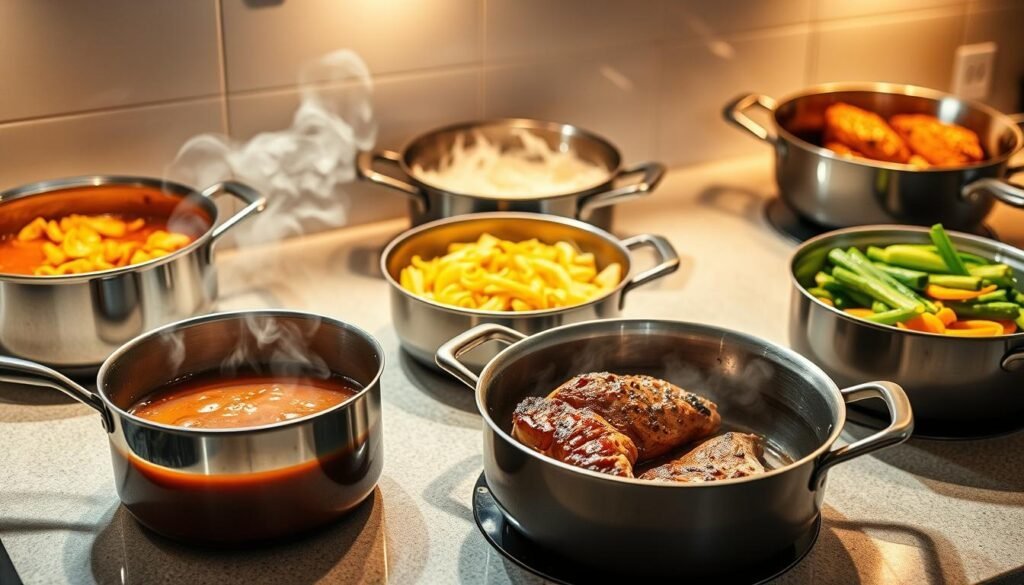
Specialized Saucepans for Modern Kitchens
Modern kitchens need to be versatile and efficient. Specialized saucepans meet these needs. They keep up with changing cooking techniques.
Induction-Compatible Saucepans: Features and Benefits
Induction-compatible saucepans are key for many kitchens today. They have a ferromagnetic base for efficient heat transfer. Benefits include:
- Energy efficiency: Uses less energy than gas or electric.
- Fast heating: Cooks food quickly, saving time.
- Safety: Surfaces stay cool, reducing burn risks.
Choose stainless steel saucepans for induction cooking. They have a thick bottom for even heat.
Dishwasher Safe Saucepans: Materials and Construction
Dishwasher-safe saucepans are great for busy cooks. They can handle dishwasher heat and detergents. Common materials are:
- Stainless steel: Durable and resistant to corrosion.
- Hard-anodized aluminum: Excellent heat conductivity.
- Nonstick coatings: Easy food release, gentle cleaning needed.
When picking a dishwasher-safe saucepan, look at its construction and materials. A nonstick saucepan with a strong coating makes cooking and cleaning easy.
Saucepan Maintenance and Longevity
A well-maintained saucepan is a kitchen’s best friend. Here’s how to keep it that way. Proper care and maintenance can make your saucepan with lid last longer. It will keep working well.
Regular maintenance stops damage and keeps it non-reactive. This is important.
Cleaning Methods for Different Materials and Finishes
Different materials need different cleaning ways. Stainless steel saucepans can handle tough scrubbers. But, nonstick surfaces need gentle cleaners and soft sponges.
When cleaning an induction saucepan, don’t use harsh materials. They can scratch the surface.
Copper bottom saucepans need a gentle copper cleaner to stay shiny. Cast iron saucepans need seasoning after cleaning to avoid rust. Always follow the maker’s cleaning tips.
Proper Storage and Handling to Prevent Damage
Proper storage is key to avoid damage. Keep them in a dry spot, away from other utensils. Use a soft cloth or paper towel to separate stacked saucepans.
Always use oven mitts or pot holders when handling saucepans. This protects your hands from burns. Avoid sudden temperature changes to prevent warping or cracking. These simple tips can make your saucepans last longer.
Buying Guide: How to Select the Perfect Saucepan
Choosing the right saucepan can be tough with so many options. Whether you cook at home or professionally, the right saucepan makes a big difference.
Budget Considerations: Investment vs. Value
When buying a saucepan, your budget is key. You need to find a balance between spending money and getting value. High-end saucepans, like those made from copper or top-quality stainless steel, cost more but last longer and cook better. But, if you’re just starting, cheaper options can also be great.
Matching Saucepan Features to Your Cooking Style
Knowing how you cook helps pick the best saucepan. For example, if you make a lot of sauces or custards, a nonstick or stainless steel pan is best. If you use an induction cooktop, make sure your saucepan works with it. Think about the size and capacity you need, and if it’s safe for the dishwasher.
Evaluating Brands and Warranty Options
The brand and warranty are important when buying a saucepan. Good brands make quality products and offer long warranties. Look for a warranty that shows the product’s durability and the brand’s confidence.
By thinking about these points, you can choose the perfect saucepan. It will meet your cooking needs and make your kitchen better.
Conclusion: Why Every Kitchen Needs a Quality Saucepan
A good saucepan is key in every kitchen. It makes cooking better by being versatile and performing well. You can use it for sauces, eggs, or grains.
Stainless steel saucepans are great because they last long and don’t react with food. This makes them a favorite for both home cooks and pros.
Getting a good saucepan helps you cook better. You can control heat and cook food efficiently. For more tips, check out Vinod Steel’s blog on saucepan cooking.
Choosing the right saucepan and taking care of it opens up many cooking options. A quality saucepan is not just a tool. It’s a way to unlock your cooking skills.
FAQ
What is the best material for a saucepan?
The best material for a saucepan depends on your cooking needs. Stainless steel saucepans are durable and scratch-resistant. Nonstick saucepans are great for cooking delicate foods.
Copper and cast iron saucepans conduct heat well. Tri-ply constructions balance heat distribution.
What size saucepan should I choose?
The size of your saucepan depends on how many people you cook for. A 1.5 to 2-quart saucepan works for most tasks. Larger families might need a 3 to 4-quart saucepan.
Are induction-compatible saucepans worth the investment?
Yes, if you have an induction cooktop, you need induction-compatible saucepans. They heat efficiently and precisely, perfect for modern kitchens.
How do I clean my stainless steel saucepan?
Clean a stainless steel saucepan with soap and warm water. For tough stains, make a paste with baking soda and water. Gently scrub the area. Avoid harsh cleaners or scourers to prevent scratches.
Can I put my nonstick saucepan in the dishwasher?
Some nonstick saucepans are dishwasher safe. But, hand washing is usually best to keep the nonstick coating in good shape. Always check the manufacturer’s instructions.
What are the benefits of a saucepan with a lid?
A saucepan with a lid keeps heat and moisture in. It’s perfect for simmering, braising, and cooking one-pot meals. It also prevents splatters and spills.
How do I store my saucepans to prevent damage?
Store your saucepans in a dry place, away from sunlight. You can hang them or store them in a cabinet with dividers to avoid scratching.
What is the advantage of a tri-ply saucepan?
Tri-ply saucepans have layers of materials like stainless steel, aluminum, and copper. This design ensures even heat distribution, preventing hotspots.
Are cast iron saucepans relevant in modern cooking?
Yes, cast iron saucepans are popular for their heat retention and distribution. They work on stovetops, ovens, and even campfires.

With over a decade of experience turning everyday ingredients into reliable, crowd-pleasing meals, Ryan knows firsthand the frustration of wasting time and effort in the kitchen. He specializes in clear, no-fuss guidance—breaking down techniques, time-saving tips, and smart shortcuts so that even complete beginners feel empowered and confident.
Subscribe to Our Newsletter
